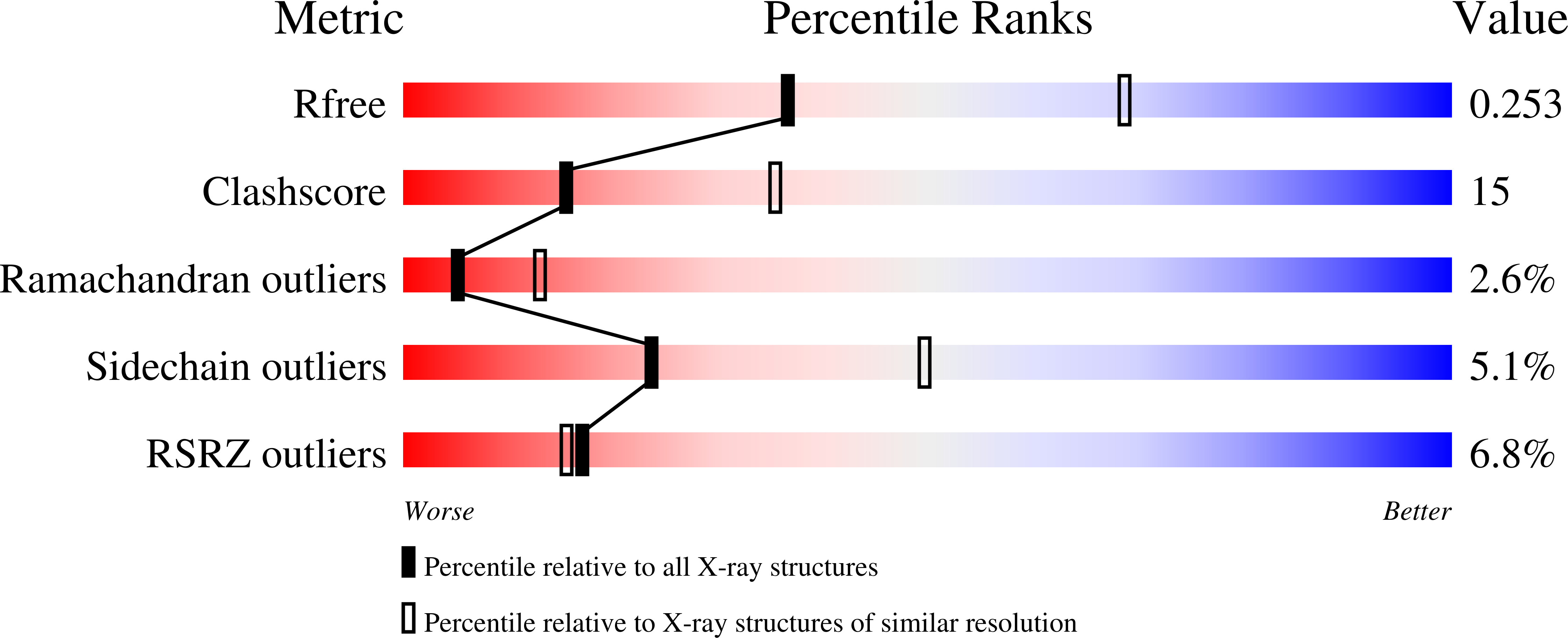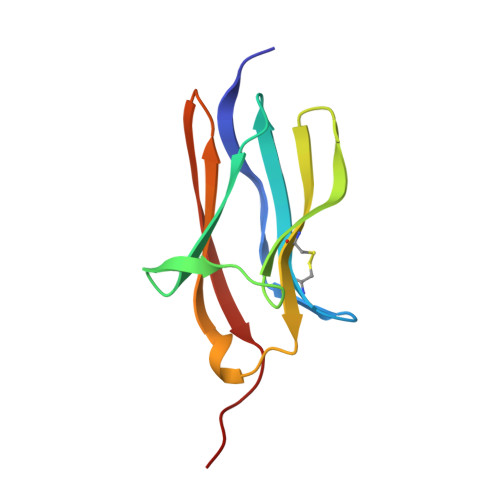Specificity in Trk-Receptor:Neurotrophin Interaction: The Crystal Structure of Trkb-D5 in Complex with Neurotrophin-4/5
Banfield, M.J., Naylor, R.L., Robertson, A.G.S., Allen, S.J., Dawbarn, D., Brady, R.L.(2001) Structure 9: 1191
- PubMed: 11738045
- DOI: https://doi.org/10.1016/s0969-2126(01)00681-5
- Primary Citation of Related Structures:
1HCF - PubMed Abstract:
The binding of neurotrophin ligands to their respective Trk cellular receptors initiates intracellular signals essential for the growth and survival of neurons. The site of neurotrophin binding has been located to the fifth extracellular domain of the Trk receptor, with this region regulating both the affinity and specificity of Trk receptor:neurotrophin interaction. Neurotrophin function has been implicated in a number of neurological disorders, including Alzheimer's disease and Parkinson's disease. We have determined the 2.7 A crystal structure of neurotrophin-4/5 bound to the neurotrophin binding domain of its high-affinity receptor TrkB (TrkB-d5). As previously seen in the interaction of nerve growth factor with TrkA, neurotrophin-4/5 forms a crosslink between two spatially distant receptor molecules. The contacts formed in the TrkB-d5:neurotrophin-4/5 complex can be divided into a conserved area similar to a region observed in the TrkA-d5:NGF complex and a second site-unique in each ligand-receptor pair-formed primarily by the ordering of the neurotrophin N terminus. Together, the structures of the TrkB-d5:NT-4/5 and TrkA-d5:NGF complexes confirm a consistent pattern of recognition in Trk receptor:neurotrophin complex formation. In both cases, the N terminus of the neurotrophin becomes ordered only on complex formation. This ordering appears to be directed largely by the receptor surface, with the resulting complementary surfaces providing the main determinant of receptor specificity. These features provide an explanation both for the limited crossreactivity observed between the range of neurotrophins and Trk receptors and for the high-affinity binding associated with respective ligand-receptor pairs.
Organizational Affiliation:
Department of Biochemistry, University of Bristol, Bristol BS8 1TD, United Kingdom.
















